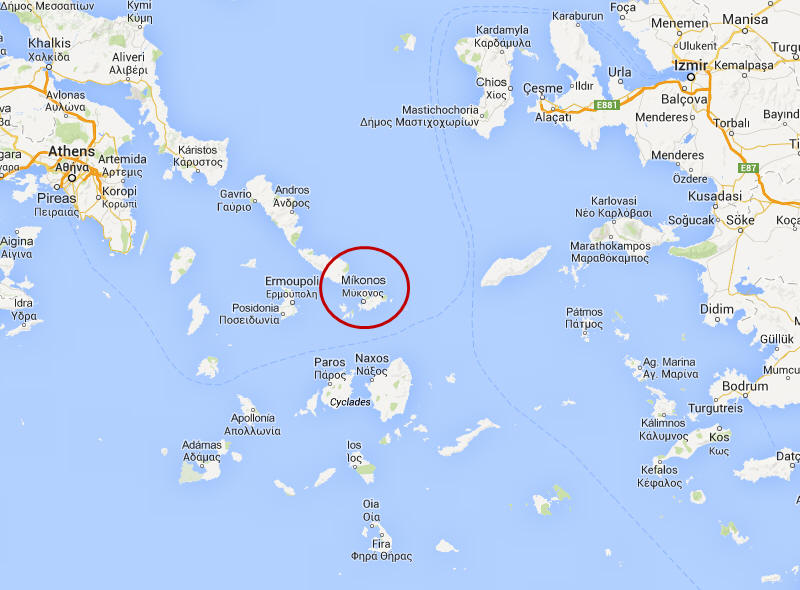Mykonos, Greece
Mykonos (sometimes spelled Mikonos), is a 33 square mile Greek island in the Aegean Sea, approximately 100 miles southeast of Athens, Greece. Archaeological findings suggest the presence of the Neolithic tribe Kares on the island in 3000 BC, but the first real settlers seem to be the Ionians from Athens in the early 11th century BC.
In the 1930s many famous artists, politicians and wealthy Europeans began spending their vacations on the island and Mykonos quickly became an international hot spot. Temporarily suspended during the Second World War, tourists once again rushed to Mykonos' luxurious shores in the 1950s and have not stopped since.
We spent the day strolling around the primary
tourist area, including the narrow streets
lined with shops and restaurants, the Mykonos windmills, Mikri
Venetia (Little Venice) and Petros the Pelican

.jpg)
.jpg)
.jpg)
.jpg)
.jpg)
.jpg)
.jpg)
.jpg)
.jpg)
.jpg)
.jpg)
.jpg)
.jpg)
.jpg)
.jpg)
.jpg)
.jpg)
.jpg)
.jpg)
_________________________________________________________________________________
Petros the Pelican - an old celebrity of the town's waterfront, "Petros" has been the official mascot of Mykonos for over 50 years. He took up permanent residence on the island after a storm in 1954 and after his death the islanders elected a successor to carry on his legacy until today.
.jpg)
.jpg)
.jpg)
.jpg)
.jpg)
.jpg)
.jpg)
.jpg)
.jpg)
.jpg)
.jpg)
.jpg)
.jpg)
Mykonos windmills - The windmills are a defining feature of the Mykonian landscape. There are many dotted around the island, but most are concentrated in the main town of Chora. The famous "Kato Mili" in Chora (Greek for lower mills), stand in a row on a hill overlooking the sea to harness the strong northern winds. Capped with wood and straw, the windmills were built by the Venetians in the 16th century to mill flour and remained in use until the early 20th century. Many have been refurbished and restored to serve as homes to locals and vaults to numerous Mykonian heritage documents.
.jpg)
.jpg)
.jpg)
.jpg)
.jpg)
.jpg)
.jpg)
.jpg)
.jpg)
.jpg)
.jpg)
.jpg)
Lunch along the bay
.jpg)
.jpg)
.jpg)
.jpg)
.jpg)
.jpg)
.jpg)